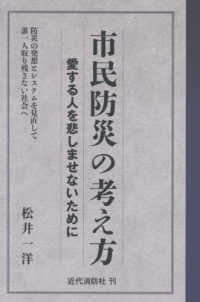Full Description
The Internet of Medical Things (IoMT) is a system that collects data from patients with the help of different sensory inputs, e.g., an accelerometer, electrocardiography, and electroencephalography. This text presents both theoretical and practical concepts related to the application of machine learning and Internet of Things (IoT) algorithms in analyzing data generated through healthcare systems.
Illustrates the latest technologies in the healthcare domain and the Internet of Things infrastructure for storing smart electronic health records
Focuses on the importance of machine learning algorithms and the significance of Internet of Things infrastructure for healthcare systems
Showcases the application of fog computing architecture and edge computing in novel aspects of modern healthcare services
Discusses unsupervised genetic algorithm-based automatic heart disease prediction
Covers Internet of Things-based hardware mechanisms and machine learning algorithms to predict the stress level of patients
The text is primarily written for graduate students and academic researchers in the fields of computer science and engineering, biomedical engineering, electrical engineering, and information technology.
Contents
1. Applications of Internet of Things and Machine Learning Technologies in Healthcare 2. Automated Detection of Patients Developing Anorexia Nervosa and Bulimia Nervosa using XGBoost Algorithm 3. Breast Cancer Prediction using Machine Learning Approach 4. A Survey on the Development of Deep Learning based Techniques in the Diagnosis of Parkinson's disease 5. A deep learning-based approach for detecting diabetic retinopathy in retina images 6. Optimized CNN for CBIR in Medical Imageset 7. Paddy Leaf Diseases Detection using Otsu and Yen Thresholding with Deep Convolutional Neural Network 8. Applications of IoT Enabled Systems in Healthcare Industry 9. Enhancing Health and Environmental Monitoring: Open Source IoT-Enabled SCADA system with Node-Red, InfluxDB, Grafana, and Raspberry Pi 10. Transfer learning for healthcare 11. Conclusion







